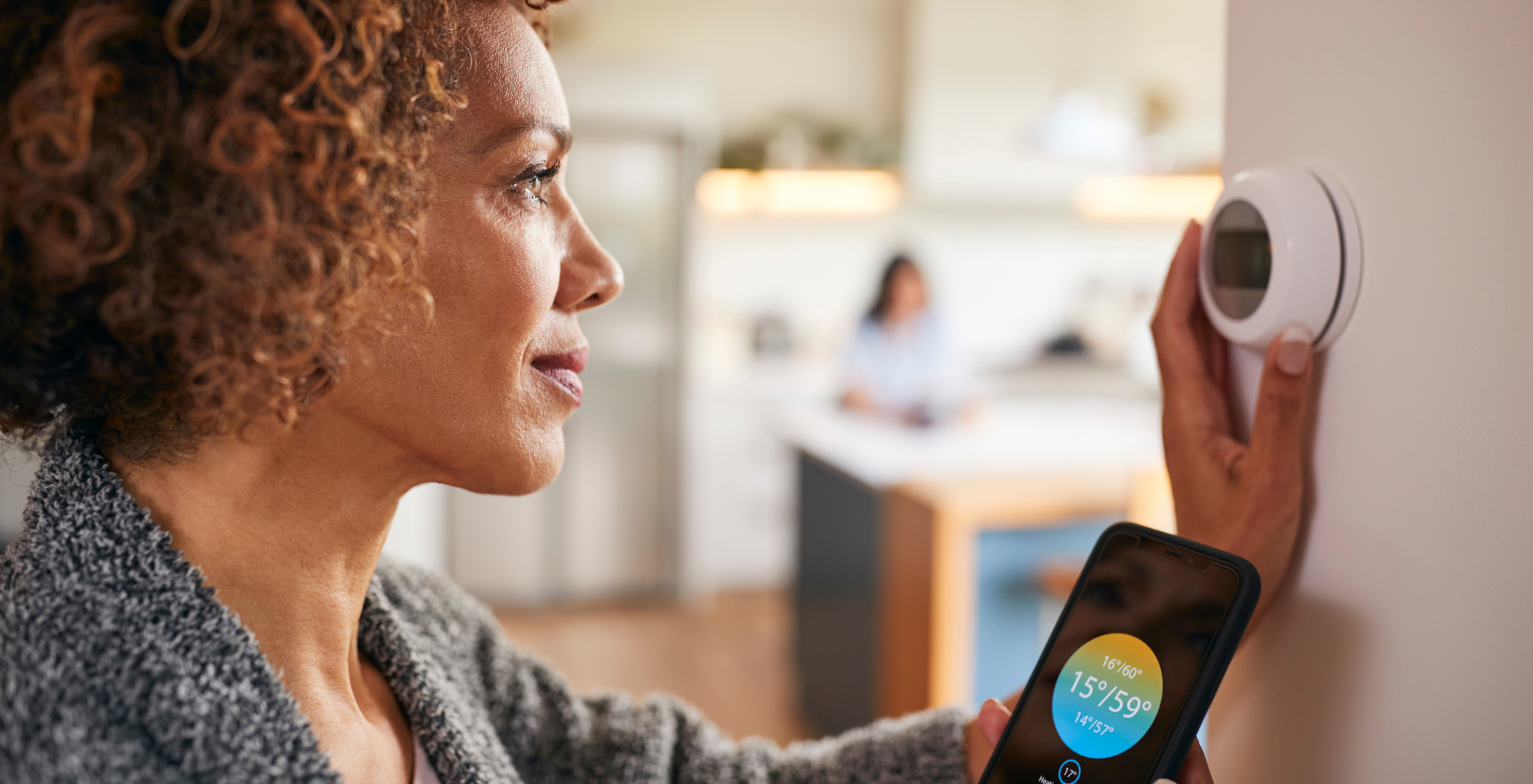
For consumer packaged goods(CPG) brands, omnichannel strategies and omnichannel marketing trends can be powerful keys to delivering a consistent message that builds brand success.
CPG omnichannel strategies: A key to consistent consumer connections
As modern consumers interact with an ever-growing range of channels and touchpoints — from social media and mobile apps to in-store experiences and online shopping — brands must adopt a unified approach to stay relevant and drive engagement. And for CPG brands striving to build stronger connections with these consumers, omnichannel strategies deliver a clear and powerful advantage.
An effective CPG omnichannel strategy means more than just being present across multiple platforms — it’s about delivering a seamless, cohesive experience that feels consistent and personalized, no matter where the consumer encounters the brand. And as more consumers have grown to expect brands to meet them wherever they are, mastering omnichannel engagement is becoming more and more pivotal to long-term brand success.
What is a good CPG omnichannel strategy?
For CPG brands, a successful omnichannel strategy hinges on creating a cohesive and engaging consumer experience across all touchpoints. This approach not only strengthens brand identity but also deepens customer loyalty by making every interaction feel personalized and seamless.
These are the core characteristics of a robust omnichannel strategy for CPG brands:
- Consistency across channels: Consistency is key to an effective omnichannel strategy. Whether a potential or returning customer is shopping in-store, browsing products online, scrolling through social media or using a mobile app, the brand’s messaging, look and overall experience should feel unified. Consistency helps brands build trust, as it shows customers they can expect the same quality and values across all interactions with the brand.
- Personalization: Today’s demanding consumers expect the brands they frequent to understand their preferences and anticipate their needs. And by leveraging data to offer tailored product recommendations, targeted promotions and customized shopping experiences, brands can deliver this personal touch. This could mean serving product suggestions based on past purchases in an app or sending personalized offers via email that are also redeemable in-store.
- Data-driven decision-making: By analyzing data from customer interactions across channels, CPG brands can make more informed decisions. This can lead to a better understanding of customer behavior, preferences and buying patterns, helping brands refine their marketing strategies, optimize inventory and personalize messaging — all resulting in more impactful campaigns and a better customer experience.
- Seamless integration: An ideal omnichannel experience should be frictionless for consumers, allowing them to move smoothly and effortlessly between a brand’s various channels. For example, a customer might browse a product online, place an order through the app and choose an in-store pickup option. Ensuring a seamless transition between these touchpoints not only enhances convenience for the customer, but also encourages continued engagement and repeat business.
A practical example of an excellent omnichannel experience
Imagine a CPG brand launching a campaign for a new product line. The campaign could begin with social media ads that direct users to the brand’s mobile app, where they can receive a personalized discount. Once inside the store, customers might find a QR code that takes them to the brand’s website to access additional product information and usage tips. This interconnected experience allows customers to engage with the brand in multiple ways, each reinforcing the other and creating a strong, cohesive impression that drives engagement and loyalty.
Current omnichannel trends in CPG marketing
Current omnichannel trends in CPG marketing include enhanced personalization through AI-driven product recommendations, integration of e-commerce and in-store experiences via “click-and-collect” options, social commerce through influencer partnerships, and a focus on sustainability and transparency, such as using QR codes for eco-friendly product insights.
Here’s a deeper dive into each of these trends, which”especially when leveraged simultaneously”can help brands build trust, deliver convenience and engage customers more deeply by meeting them on their preferred channels:
- Enhanced personalization through AI and machine learning: Artificial intelligence (AI) and machine learning are transforming how CPG brands can personalize the customer experience. By analyzing vast amounts of consumer data, AI can make highly accurate product recommendations and create targeted promotions that resonate with individual shoppers. For instance, a brand might use AI to suggest products on its app or website based on past purchases or browsing behavior, delivering a tailored experience that feels relevant and engaging.
- Integration of e-commerce and in-store experiences: CPG brands are increasingly merging online and offline channels to create a unified shopping experience. “Click-and-collect” options and in-store mobile promotions are popular methods that encourage consumers to transition seamlessly between e-commerce and physical locations. For example, a loyalty program might offer exclusive discounts online that are redeemable in-store, rewarding loyal customers and boosting cross-channel engagement. This approach caters to consumers’ demand for convenience while increasing touchpoints for brand interaction.
- Social commerce and influencer partnerships: Social commerce — shopping directly through social media platforms — has gained traction as a powerful way for CPG brands to connect with customers and drive sales. By partnering with influencers who align with their brand values, CPG brands can amplify their reach and credibility. For instance, an influencer collaboration can direct followers to a brand’s mobile app or website, converting engagement into sales while fostering brand authenticity and brand loyalty.
- Sustainability and transparency as brand drivers: As consumers become more environmentally conscious, CPG brands are responding with greater transparency around sustainability. This includes promoting eco-friendly practices and responsibly sourced ingredients across channels. For example, some brands include QR codes on their packaging that allow consumers to scan and learn about sourcing, production practices and sustainability initiatives on the brand’s website. This added layer of transparency builds trust and aligns the brand with customers’ values, helping brands enhance loyalty and long-term engagement.
Key benefits of CPG omnichannel strategies
Implementing a strong omnichannel strategy offers several significant benefits for CPG brands, driving not only immediate engagement but also long-term customer value. Among the clear upsides of employing omnichannel strategies:
- Increased customer loyalty: A consistent brand experience across all channels fosters trust and strengthens loyalty among consumers. When customers encounter the same reliable experience — whether they’re shopping in-store, browsing online or engaging on social media — they’re more likely to develop a deeper connection to the brand. This consistency reassures consumers that the brand is dedicated to delivering value wherever they interact, which can significantly boost loyalty.
- Higher customer lifetime value (CLV): By making customer interactions more engaging and personalized, omnichannel strategies encourage repeat purchases, increasing customer lifetime value. When customers can seamlessly shop across multiple channels, they’re more likely to return and make additional purchases. Personalized recommendations and targeted promotions can further enhance this effect, making customers feel valued and understood, which also directly contributes to higher CLV.
- Better data insights: Omnichannel strategies provide brands unified data from multiple touchpoints, offering a more comprehensive view of customer behavior. This data allows brands to better understand their customers’ needs, preferences and desires, informing future marketing strategies. By analyzing this data, CPG brands can refine their approach, optimize inventory and make more informed decisions, ultimately enhancing the overall customer experience.
Together, these benefits highlight how a well-executed omnichannel strategy can help CPG brands not only attract but also retain customers, driving both immediate engagement and long-term growth.
Elevate your CPG marketing efforts with Brandon
Is your brand looking for ad agencies that specialize in CPG? At Brandon, our team of certified brand strategists and data-driven marketing professionals has worked with brands in a wide range of CPG categories. We understand CPG marketing strategies, and we’ve consistently helped our CPG clients put more of their products in more consumers’ carts. When you need a hand, we’re ready to put our experience and know-how to work creating more awareness of, interest in and demand for your CPG brand’s products.
What’s more, Brandon’s fully integrated marketing firm can cover the entire spectrum of your brand’s marketing needs, from SEO and email marketing to brand strategy, creative, paid media, and more. To get started with help ranging from a simple website analysis to a comprehensive strategy tailored to boost the performance of all your marketing campaigns, contact us today.
Cary Murphy
Chief Strategy Officer
Cary Murphy is our Chief Strategy Officer at Brandon. He has been in marketing for over 30 years, starting his own agency from scratch and growing it into a market leader. He sold his agency to Brandon in 2016 and joined their leadership team, bringing his expertise to a wider audience. He’s also our category leader for B2B and CPG, working with clients such as Nucor Steel, Wastequip, Green Giant, Idahoan Foods, and Victory Beer. He helps clients create brand stories and strategies that increase sales, boost customer loyalty, and generate media coverage. He doesn’t settle for the status quo or conventional wisdom. He finds hidden connections and patterns and turns them into compelling narratives that resonate with customers. Cary is a smart and inspiring leader who challenges and supports his peers to do their best work. He believes that discipline is more important than motivation, and that good habits are more powerful than goals. Cary is a leader who combines talent, experience, and passion, with something else. A skill that he learned and honed over decades of practice and experimentation. A skill that helps him uncover the remarkable in both people and products.
By subscribing to our newsletter, you agree to our Privacy Policy.





